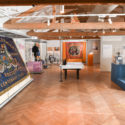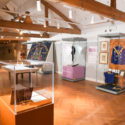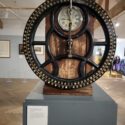Review: Living with Machines
Article DOI: https://dx.doi.org/10.15180/221807
Keywords
exhibition, exhibition design, Industrial revolution, Leeds, Leeds City Museum, Living with Machines, Mechanics Institute
The Leeds City Museum resides in an impressive former Mechanics Institute at the heart of the city. Built in 1868, it was later home to a civic theatre until the Museum opened to visitors in 2008, bringing together the history of the city, alongside galleries exploring the natural and ancient worlds.
The material culture of industry is evident in the permanent galleries, notably the Leeds Story, but as Leeds Museums and Galleries are home to two impressive industrial heritage museums, Armley Mills and Thwaite Mills, it doesn’t dominate the narrative at the Millennium Square location. Why then, does ‘Living with Machines’ reside in the temporary exhibition space at the top of the Leeds City Museum, rather than in a temple to industry such as Armley or Thwaite? Simply put, this exhibition puts people at the heart of industrial material culture, and so it is truly apt that a former mechanics institute and performance space in the city is now home to a temporary exhibition discussing the players in the theatre of industry.
The ‘Living with Machines’ exhibition comes from a vast research project of the same name, funded by the Arts and Humanities Research Council (AHRC) via UK Research and Innovation’s (UKRI) Strategic Priorities Fund, the focus of which is to rethink the impact of technology on the lives of ordinary people during the Industrial Revolution.[1] Brought together by Leeds Museums and Galleries and the British Library and supported by loans across numerous museums, the exhibition showcases some significant objects, including Charles Dickens’s handwritten notes on Hard Times and a first edition of Elizabeth Gaskell’s North and South, and it covers an ambitious amount of industrial history in the space. There are plenty of opportunities to engage with the questions raised by the research project but the first thing you see is an impressive and fun-looking Lego installation, with staff on hand to support visitors experimenting with it. As a museum with a predominantly family appeal, this sets visitors off with a participatory expectation, and when I was in the space there were lots of inter-generational conversations happening, demonstrating the impact that people-centred stories have in gallery spaces.
There is an introduction to the wider research project as you arrive at the gallery, but on my trip, I sensed that most visitors were too eager to loiter and comprehend the extent of the project and wanted to head straight for the intriguing objects that could just be glimpsed as you approach. (Happily, visitors also have the chance to explore the research discussion on exiting the space, by which time the objects and stories on display have provided some background to understanding the significance of the project). In fact, the research which underpins the gallery concept is present throughout the space, but in an accessible format, through interactives or contemporary voices, ensuring that audiences are not overwhelmed with data. Volunteer experiences from working with the research are dotted around interpretation panels to provide a contemporary perspective within nineteenth-century quotes and references.
But it is the material culture that brings this exhibition into rich focus and once you progress to the middle of the space you are drawn immediately to a stunning blue and gold banner from the Armley Clothiers Loyal Friendly Society, dated 1860. The interpretation of this object demonstrates the impact that the ‘Living with Machines’ research has had in presenting material culture that tells the story of impending technology and adapting societies. Objects in the exhibition are all accompanied by a balance of social and economic information to contextualise the impact of the object. This sounds simple enough, but alongside the industrial collections, it brings together the human perspective and understanding of the rapid pace of change in technology across the nineteenth century. The blend of people’s stories alongside the technological achievements of their age allows audiences to appreciate how each generation engages with their version of ‘new’ inventions and innovations. The exhibition does not shy away from going into the deep impacts that the technological advancements had on people and it describes how these changes to working life allowed people to make more but also reduced personal autonomy over their work. On display is a mortgage deed from 1819 for a Leeds cottage owned by William Townsley, a blind door-mat weaver. With the advent of the factory system, workspaces would not have been as accessible to people with disabilities as home working had been before – arguably something the modern workplace has still not fixed.
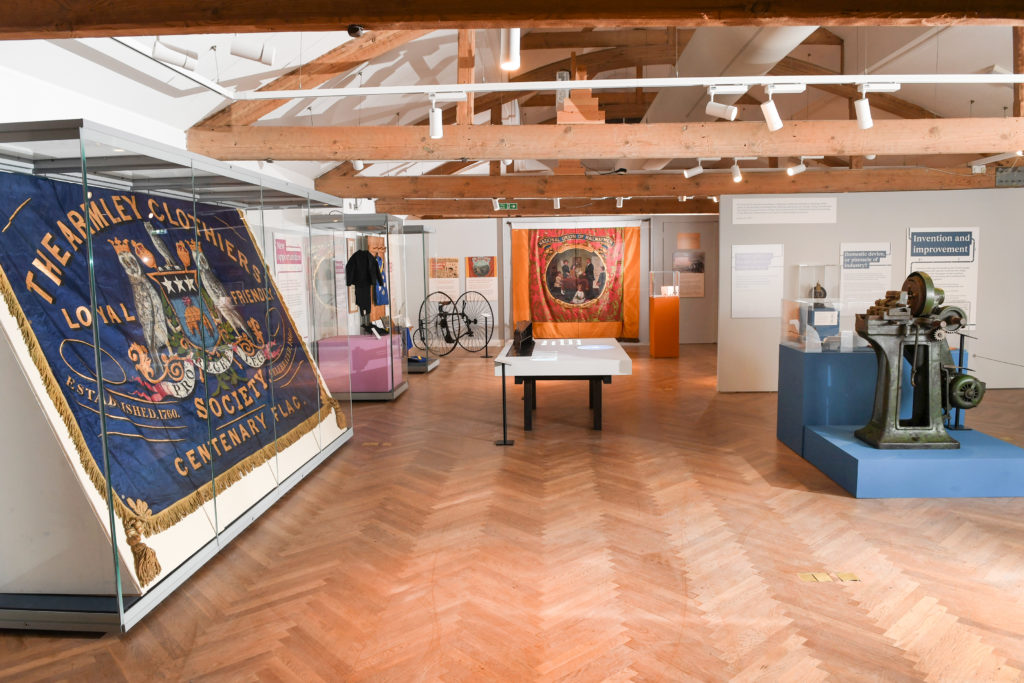
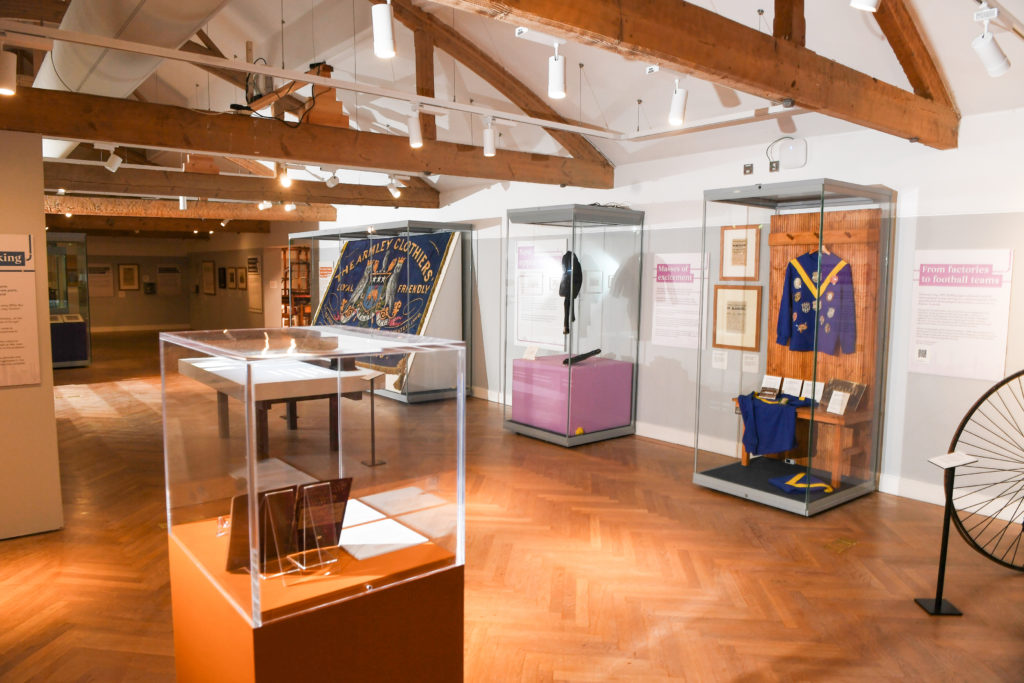
The exhibition shouts about the power of stories, and of how word, song and type brought the impact of machines to a wider audience. Placed alongside the machines and used in their interpretation, you can appreciate the nuances in the narrative that might be overlooked if this were in a traditional industrial heritage museum. One example is the factory clocking-in clock, made in Leeds in the early 1900s. Displayed here, it looks like a beautiful and sculptural piece of engineering, and the space of the gallery allows you to look at it as an extraordinary artefact outside of its working context. The interpretation brings a deeper angle, describing how the introduction of factory work meant you worked to the time of the company and not to your own time, as had been the case before ‘clocking-on’ became a working norm. Bringing objects together in this space allows them to be freed from the pure understanding of their function to a greater appreciation of the relationships people formed with these objects. The clocking-in clock goes from being an object of technical skill to a sinister symbol of control over factory workers, all in the space of reading a label.
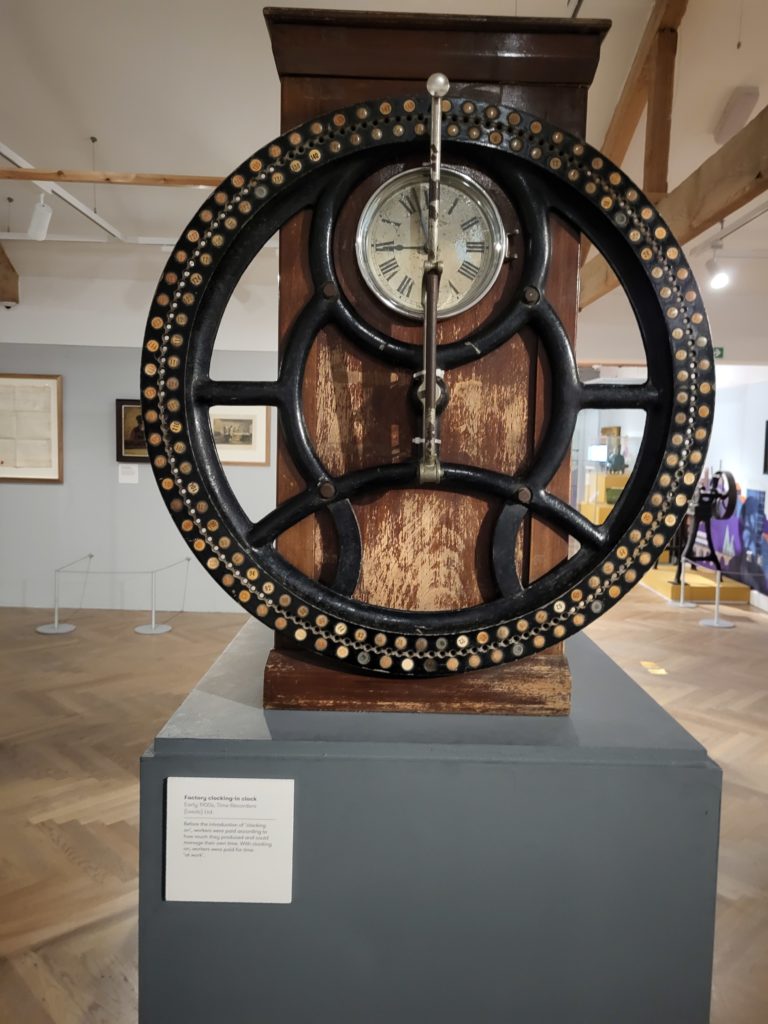
The breadth of narratives that the exhibition explores is huge, encompassing workers’ rights, colonialism, pollution, gender inequality, immigration and resistance, to name just a few. Taken individually, each one of these narratives could fill an entire gallery, and there is a lot of content for the audience to absorb quite quickly in the space. However, visitors are not rushed through and can explore at their leisure, and the bright and airy exhibition design allows for breathing space between objects to pace your visit. I would have loved the opportunity to dive deeper into some of these narratives, but fully appreciate there are limits to how much one exhibition can deliver where the focus is the very large one of exploring our changing relationships with technology. The exhibition has been accompanied by a series of events that add more depth to the content, including a focus on the impact Artificial Intelligence has had and how we approach industrial innovation today. The exhibition does show the huge potential for further exploration of the themes from the project and there is a lot more still to say and to discover about our relationships with changing and emerging technology.
This exhibition delivers an object-rich exploration of technological impact with a focus on people throughout, including both contemporary and historic perspectives. The wider research project is tremendous in its depth and potential, and the approach to understanding the many facets of technological advancement and its impact on people across society is a refreshing area of focus in industrial collections. My only complaint is that it wasn’t possible to get even more objects and stories into the exhibition, as I could have quite happily explored the social history of machine experiences for much longer. But, as the exhibition reaches more visitors, and the research project is further utilised, it will encourage audiences to discuss how objects in museums impact society more broadly.
As I left the exhibition space, I listened to an animated family discussion taking place. A parent was describing having to ‘clock-on’ in their first job role to their younger family members, pointing out how the object in the exhibition shows people needing to do the same thing 100 years ago. This is what I enjoyed most about my visit – the ability of the exhibition to reduce the gap of experience between those living through the Industrial Revolution and our lives today making the past both tangible and personal.



